Pro Tip: How Wes Logan Ties a Jig
The Alabama pro shares his formula for the perfect all-purpose bass jig
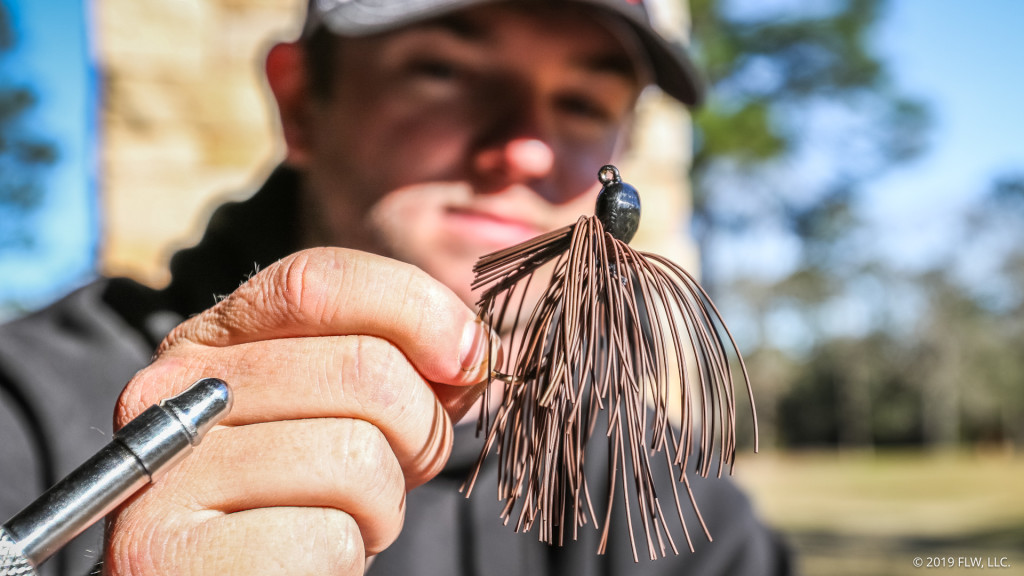
Wes Logan is particular about his jigs. So particular that he pours his own heads and ties his own skirts. Logan’s tying method keeps the skirt from slipping down or spinning around – a pet peeve of his. Some folks do the same with wire, but Logan prefers using light braided line.
“I’ve never really liked wires,” he says. “I don’t know why. I grew up using sewing thread or braid to tie my skirts. And I hate bands. They dry rot and break.”
The Alabama pro brings everything he needs with him on the FLW Tour so if he wants to change a skirt or tie up a particular color, he can make it happen. Here’s his system.
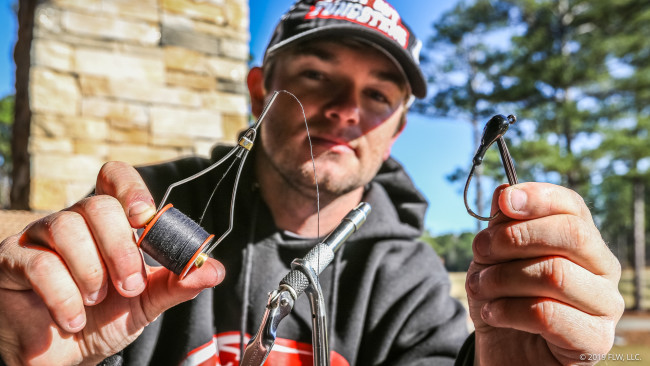

1. Logan fishes a variety of jig types, but his most common choice is a custom head he pours using the Do-It Molds Weedless Bass Jig Mold S Style. It’s basically an Arkie-style head with a brush guard and short ball-style collar. The first step in tying the skirt is to wrap 10- to 12-pound-test braided line around the shank of the jighead about a half-dozen times. These pre-wraps help keep the skirt from slipping around during tying, and while fishing. Be sure to wrap over the tag end, so it stays tight, and then trim off the tag.
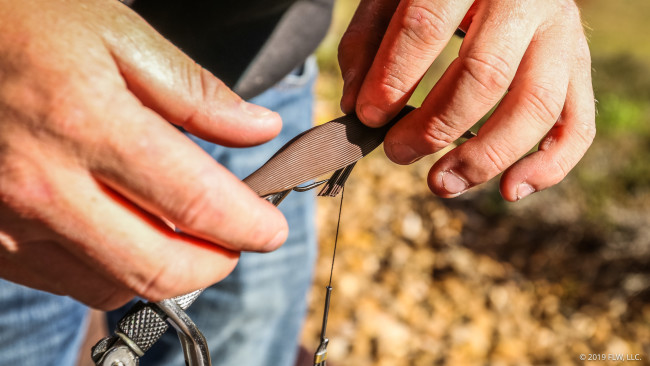
2. For the most part, Logan keeps his jig skirts pretty simple – a lot of solid black or brown. “I normally use the Living Rubber skirt material, which is the round rubber,” he says. “I’ll use some silicone strands if I want to add a little gold to go with brown or blue to go with black. But I normally just use your basic colors.” Logan prefers the medium-grade Living Rubber, which has 40 strands to a roll. Cut off about 6 inches and drape the rubber around the collar. Pinch it tight to hold it in place.
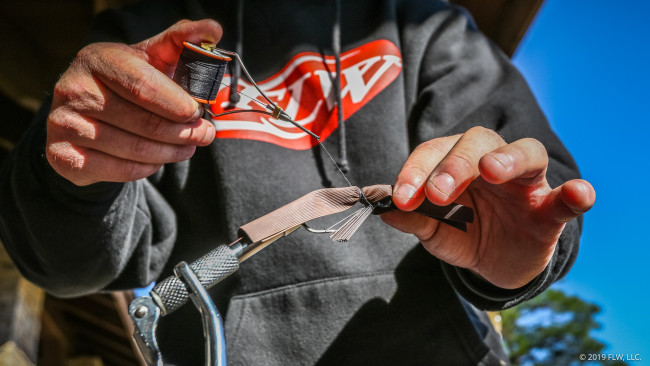
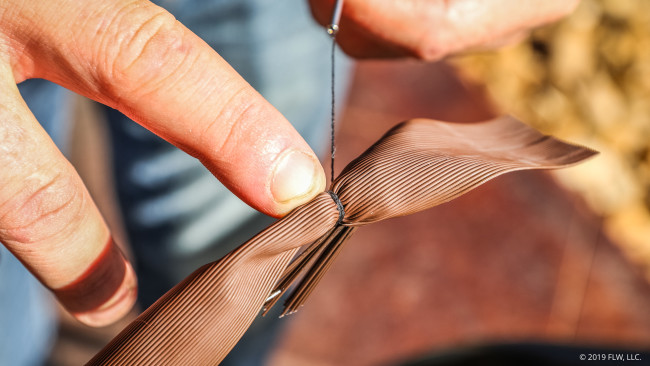
3. Now wrap the braid 20 to 30 times around the strands. “You have to put a pretty good bit of pressure on it or the skirt won’t hold. It’ll roll on the jig,” Logan adds.
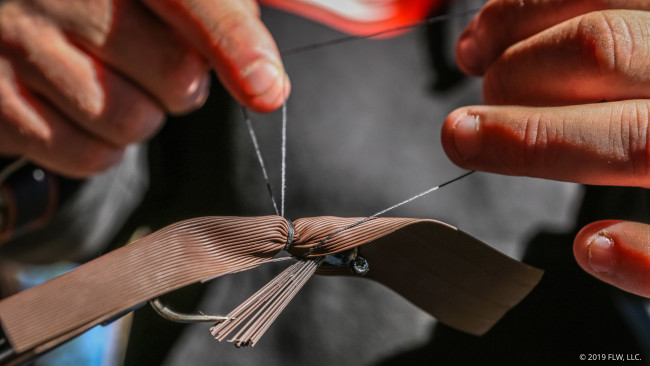
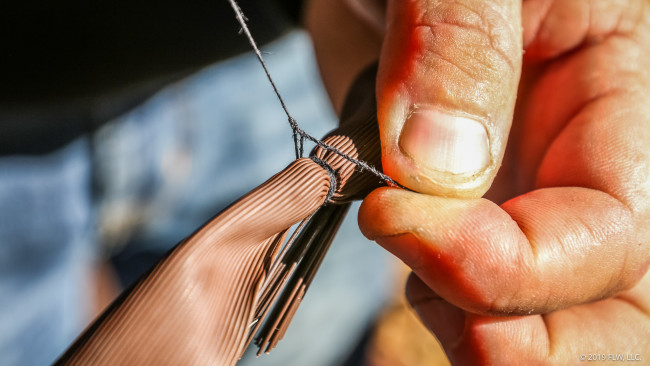
4. Tie off the braid with a couple of overhand knots. “If I build jigs for people or to sell, I’ll put a couple drops of glue on it [the braid],” Logan says. “If it’s for me, I don’t glue it. Gluing it always helps, but it just takes a little more time.”
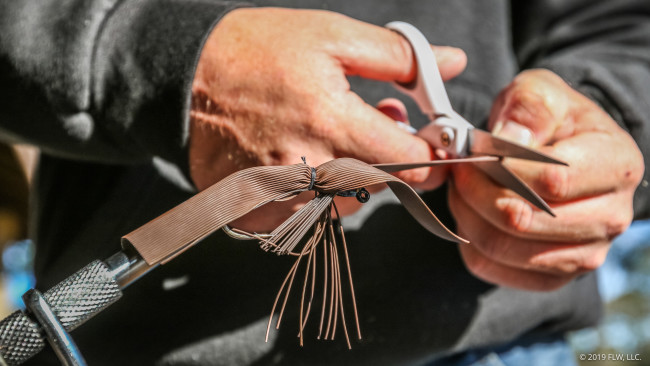
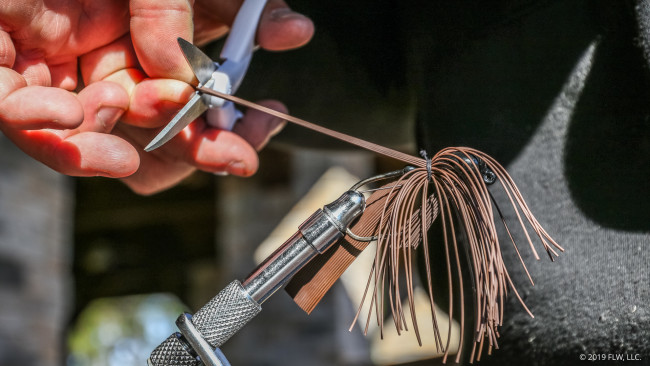
5. Once the skirt is tied, gently stretch the rubber material and trim the ends with scissors. The strands should separate, finishing the jig.
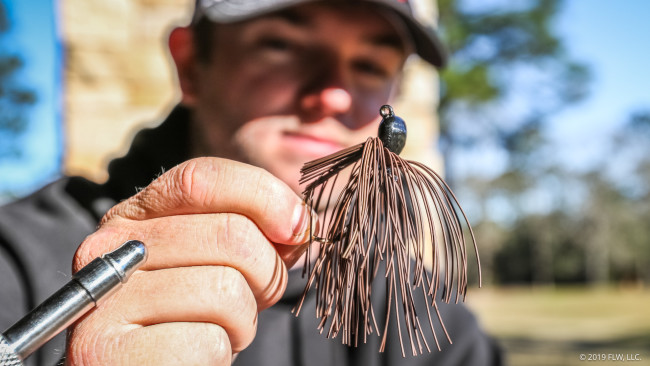
The finished product.